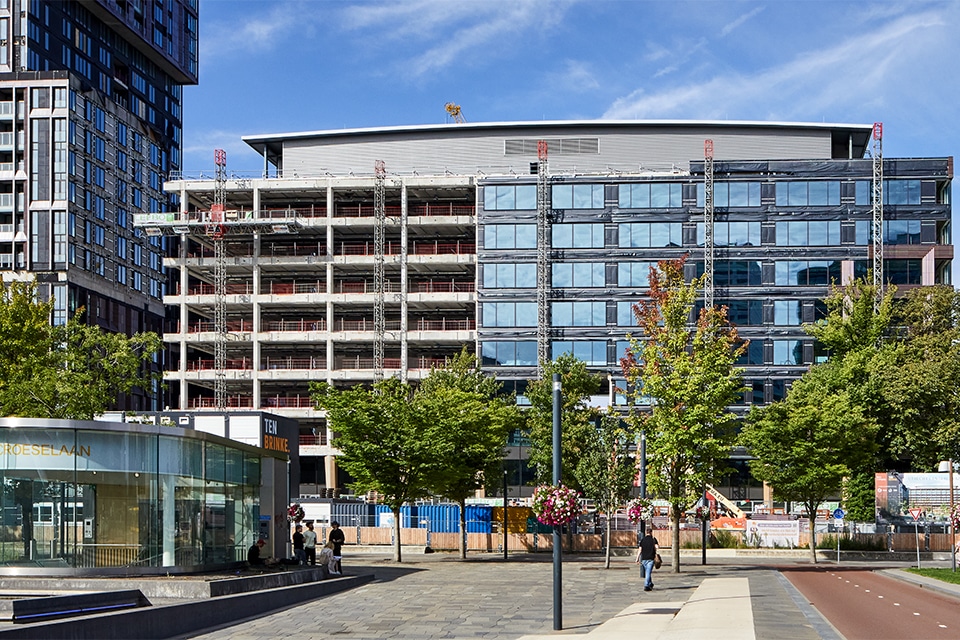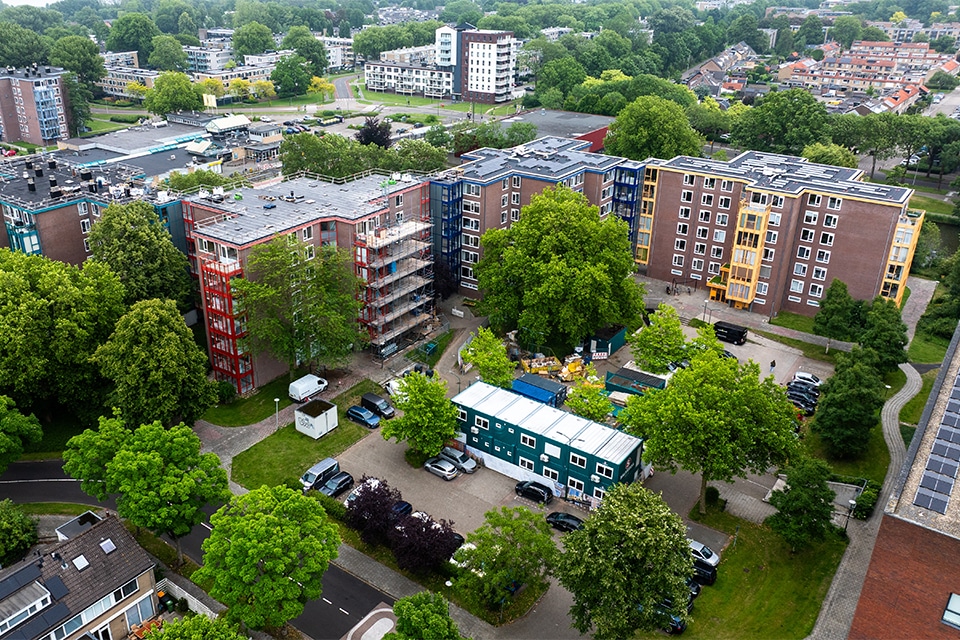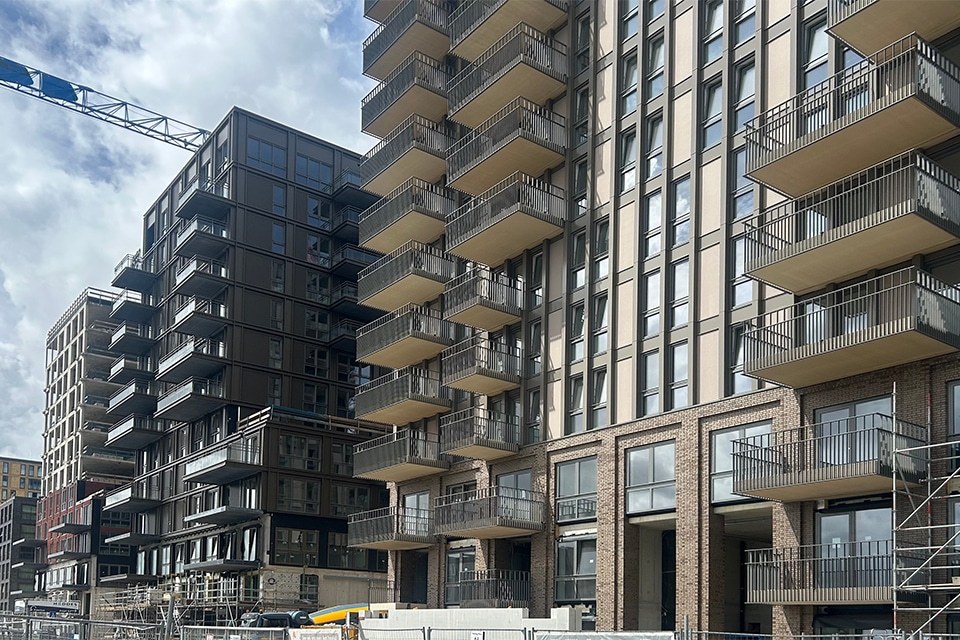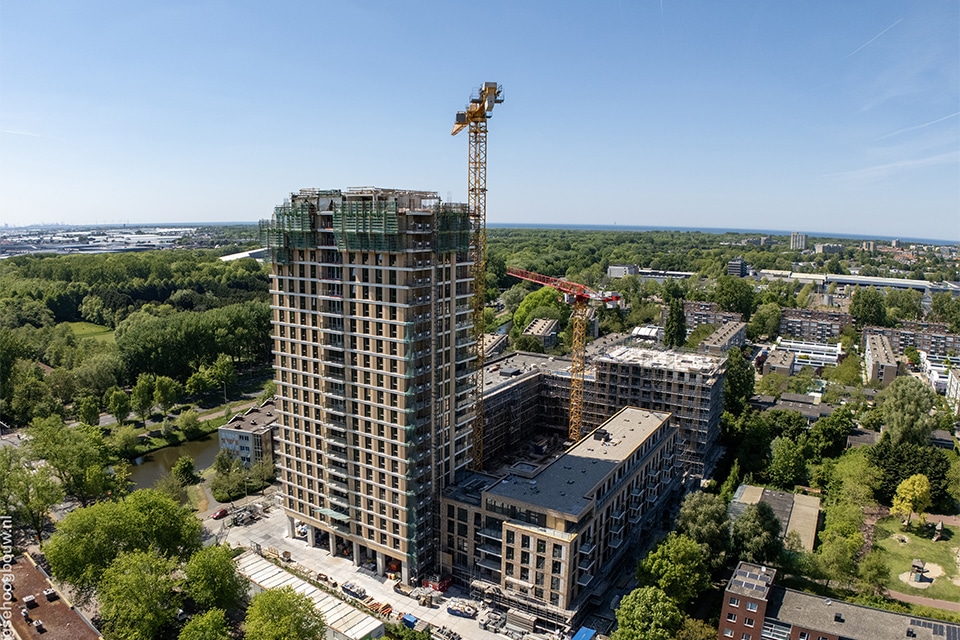
Building with flax has the future
Innovative and green. This is how the Leerpark, a new district close to the geographical heart of Dordrecht, can best be described. In the district, living, working, learning, doing business and relaxing come together. Sustainability and innovation are central to this. For example, the most sustainable wall in the Netherlands will be used in the construction of 333 starter and student housing units.
Construction of the residential complex is in the hands of Daiwa House Modular Europe. Here, the innovative construction company strives to achieve the best possible environmental performance. This includes products with a low environmental impact. For the partition walls and door/window combinations, Daiwa House Modular Europe chose Faay products. "The environmental performance of our partition walls was made transparent in a so-called life cycle analysis," says Developer Sustainable Products Johan Mellegers of Faay. "This showed that within their segment they have the lowest environmental impact."

Core of flax
"The sustainability of our partitions is primarily in the biobased materials we use," Mellegers continues. "The core of our walls consists of flax. This is a natural raw material that is renewable and recoverable, and also can be grown locally. Flax absorbs CO2 during cultivation and converts it into oxygen. To give you an idea: one hectare of flax captures as much CO2 in one cultivation cycle as one hectare of forest in one year. So a Faay wall with flax core contributes positively to the storage of CO2. We're talking about more than 580 kilograms of CO2 per cubic meter of wall. Equally important is that the wall contributes to an optimal and healthy indoor climate with a high level of comfort."

Flexibly adaptable
The starter and student housing now being built in the Leerpark is housing from 18 to 24 square meters. To make the housing complex future-proof, it is important that these homes can be flexibly adapted to any changing demand. Mellegers: "Our prefabricated modular partitions lend themselves to this. The walls are constructed from standard panels 40 centimeters wide, with two cable ducts for the installation of electrical or data communication lines. The panels are demountable and reusable, making them suitable for rearranging the building. This reuse saves transportation, labor and waste."

Circular
With a lifespan of sixty to as much as one hundred years, the partitions will last at least as long as the housing complex itself. And even after that, the walls can be reused. "We are the first wall manufacturer in the world with a take-back option," Mellegers said. "Because of the circular biobased materials, the walls are recyclable. We reuse them in the next construction cycle. That way, we retain the stored CO2 even longer and again save on transportation, labor and waste."




